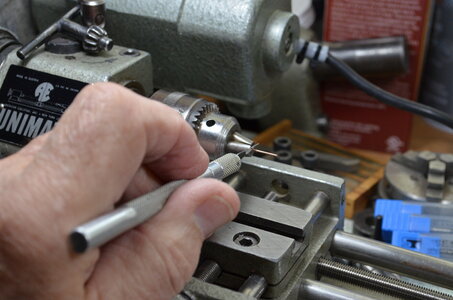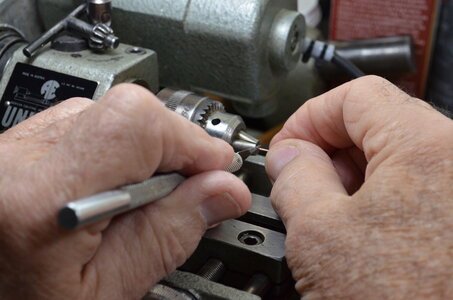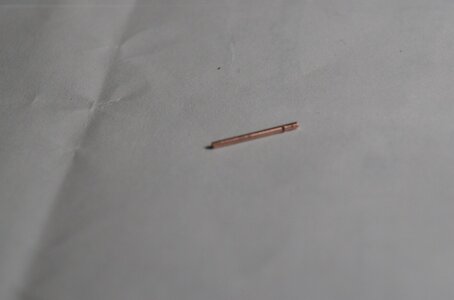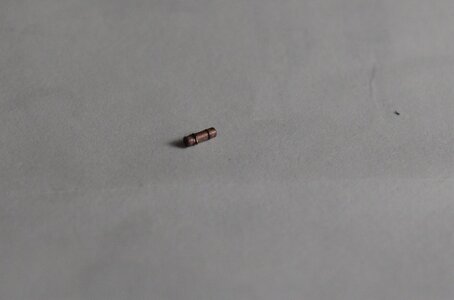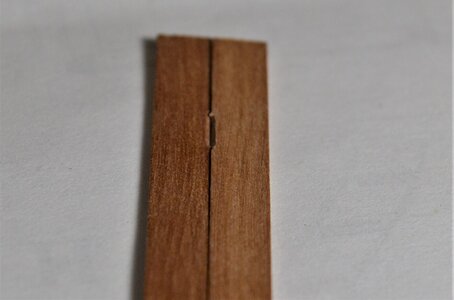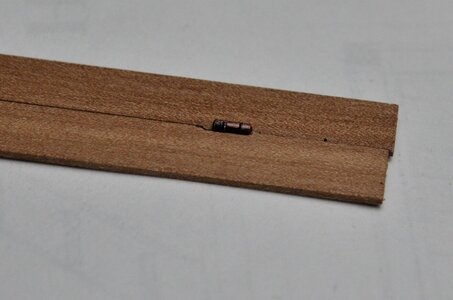Closeup of finished rudder installation. Getting pretty busy here at the top of the rudder, but there will be even more hardware here when the emergency steering lines are installed.
View attachment 352043
When I started this build a few years ago, I felt certain that one particular part of this ship was beyond my ability to scratch build. That was the stern lantern. There was just no way! So I've been searching on line for one, but was not really pleased with anything I found. I had some nice 3/4 inch diameter clear plastic rod stock, so I cut off a piece, set up the Unimat for vertical milling, with an indexing mount, and figured I would just see how far I could get. If this thing was a uniform crystal shape, I thought it would be difficult enough, but since it has to be skewed aft by about 14 degrees, I knew that I would soon prove what I already knew -- I won't be able to do this!
So I spent some long hours thinking, taking measurements off the several drawings of this light by Boudriot, and figured out how to cut a few faces of this crystal shape. But then I was stumped again. I repeated many times this process of thinking, measuring, calculating, and subsequently cutting another face or two. This went on for about 3 days. When I got to the result in the picture below, I was ecstatic! But I also realized that I had never even considered the challenge of creating the actual complex framework that seems to hold all of these window panes together. I understand that the original construction was probably a wood frame with mica windows. I found photos of HMS Victory's lanterns to be especially inspiring. But it took at least 2 more weeks of step-by-step processing to work out a way to accomplish it. The truth is I couldn't stop, but still felt quite certain that this piece would end up in the trash bin.
View attachment 352044
But here is the proof that sometimes it pays to just not quit, even if you don't know what you're doing! Now I will show you how I did it, but I truly hope that some of you will put me on to some much easier ways that this might be done.
By the way, those 2 ornamental carved bombs flanking the taffrail are also new additions to the model.
View attachment 352045
Hopefully, the next 3 photos will help the viewer to understand how this fixture I made for the Unimat is simply a guide for a common little handsaw that most of us use in our model making. The handle of the saw is just out of the photo at the bottom. The teeth of the saw are cutting accurate grooves in the plastic crystal. However, this setup can only cut the horizontal parts of the window frames. The chuck is rotated
only by hand. No power is used at any time. The guiding fixture is attached to the lathe tool post so it can be accurately placed as needed to cut grooves for framing. A shallow groove is cut, and then the crystal is rotated 1/8 of a turn to the next face on the crystal where the groove is continued. And so it goes, face by face until the grove rejoins with itself. Then the fixture is moved to the next level of framing and process is repeated.
The tan color you see is actually paint which fills the grooves. It takes several coats. Scraping and very fine sanding subsequently removes the dried paint from the window panes, but strips of paint remain in the grooves, as you can see. This takes days to do, so I also was working on other things at the same time.
View attachment 352046
View attachment 352049
Here you can see how the fixture is secured in the basic block-style tool post of the lathe. Note the 2 indentations where the tool holder's screws have gripped the fixture.
View attachment 352050
Here the painted area has enough coats to fill its grooves. It's ready for scraping and sanding. If you are following this description closely, you will be wondering how I cut the vertical elements of the frame. Those were cut with nothing more than my less-than-ideal manual dexterity and a good pair of magnifying glasses.
View attachment 352051
Part of the wooden top cap of the lantern. This is sort of a before-and-after view. This was done on the Unimat milling setup.
View attachment 352054
View attachment 352056
View attachment 352057
The main topsail sheet bits -- Was so focused on these that I forgot to take more photos.
View attachment 352058
View attachment 352060
Here I placed the 2 quarter deck breastwork panels just so I could take their picture. They have to wait for some decking to be laid before they can be permanently installed.
View attachment 352061
Anyone who has built this style of boarding ladder knows they are more challenging than they look.
View attachment 352062
Ladder installed, and the u-bolts for tying down the midship coverings are being installed.
View attachment 352068
Making lots of u-bolts. Each loop makes 2.
View attachment 352069
View attachment 352070
The secret to making anything with repeatable uniformity is a good accurate jig. I made 3 of these before I got one good enough to use.
View attachment 352075
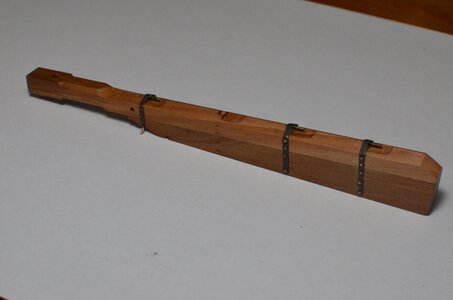
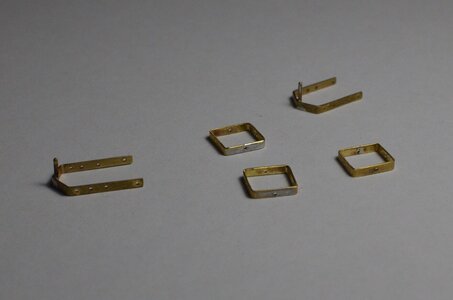
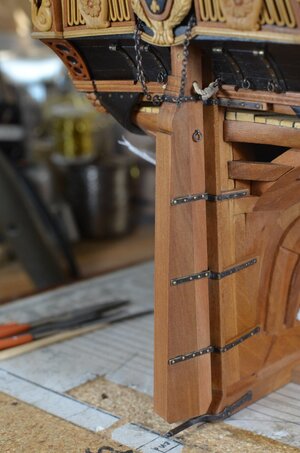






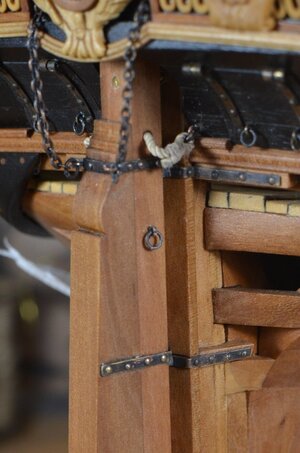
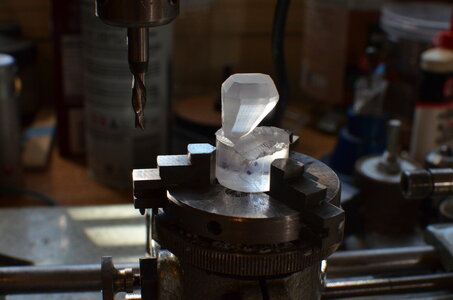
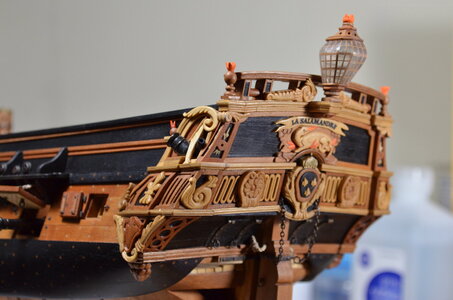
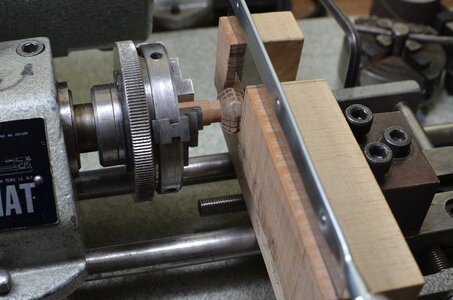
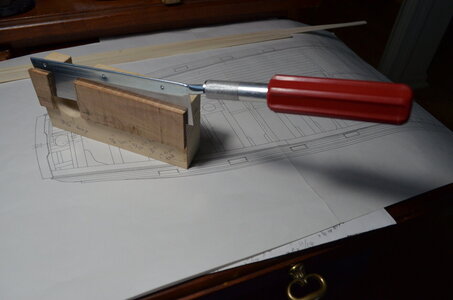
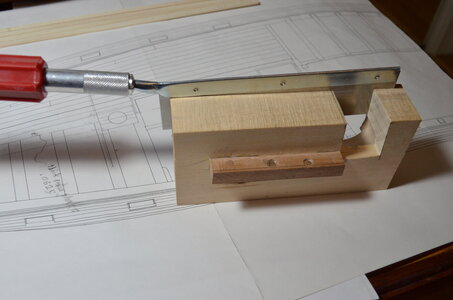
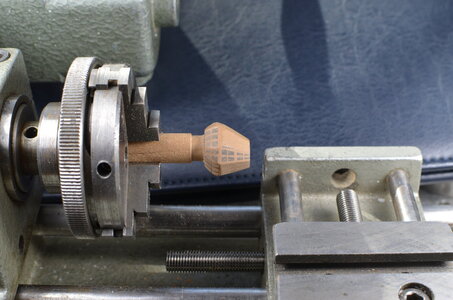
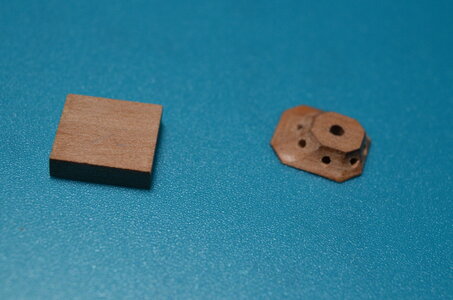
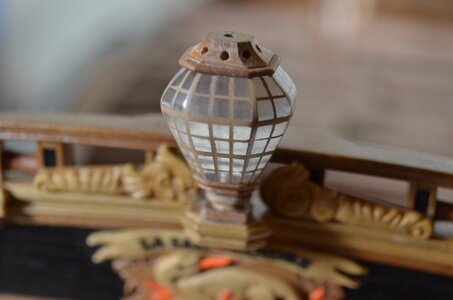
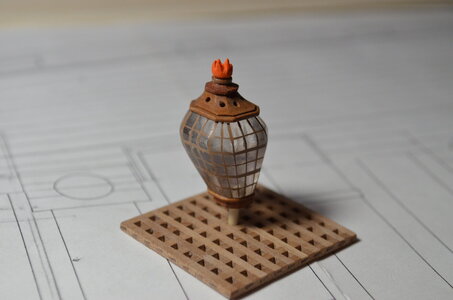
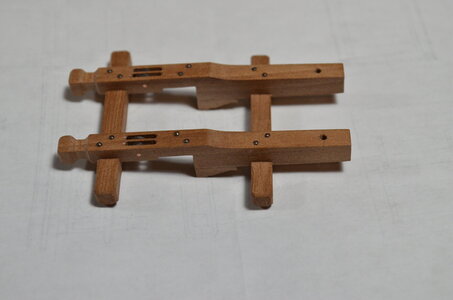
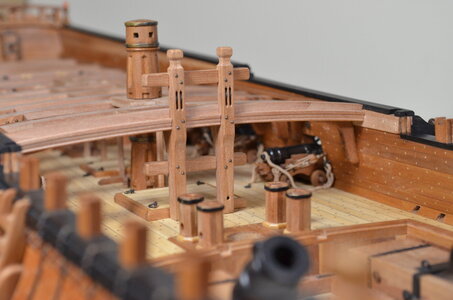
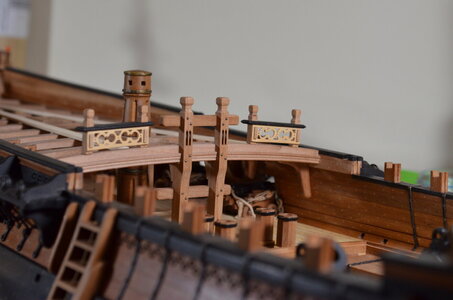
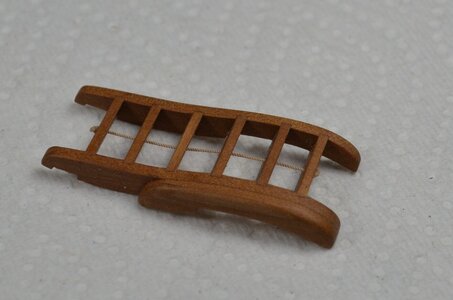
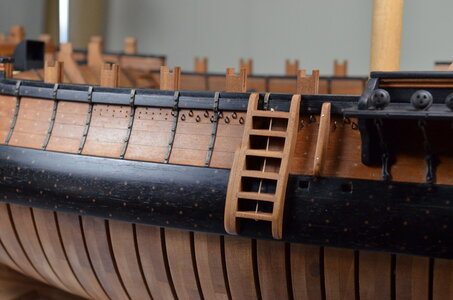
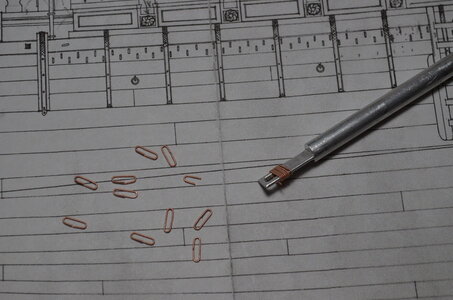
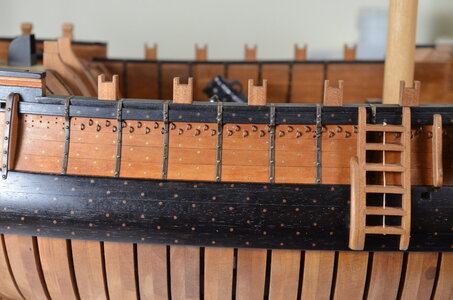
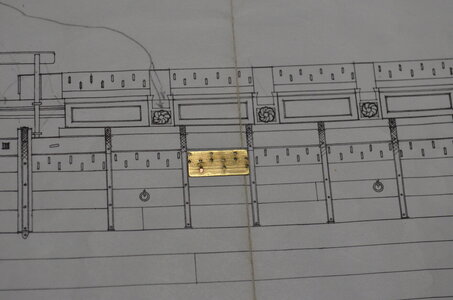



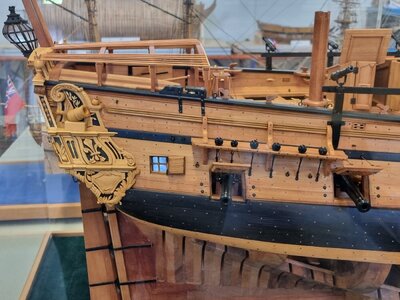
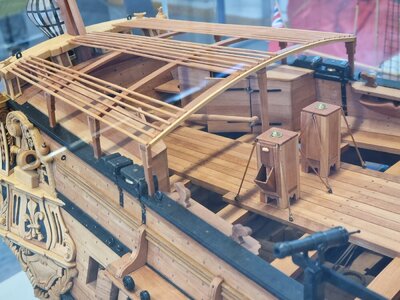

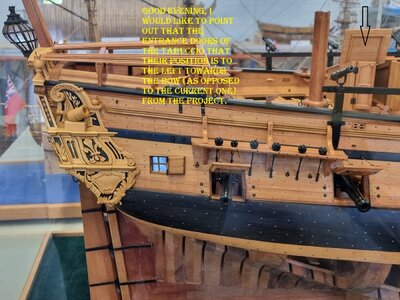

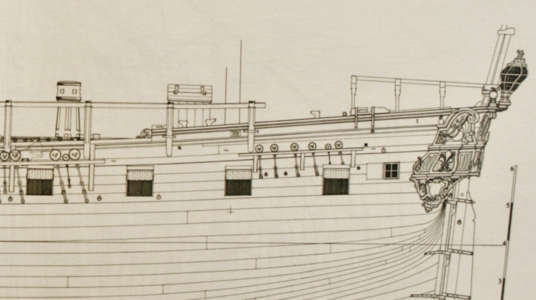
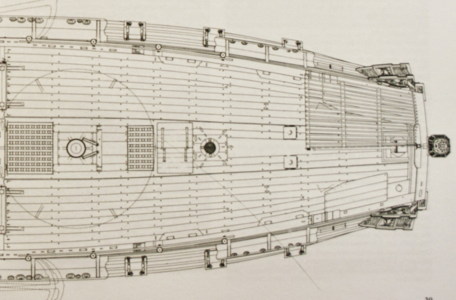
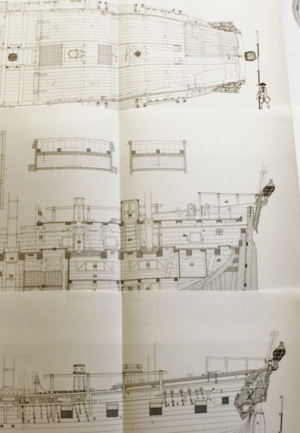
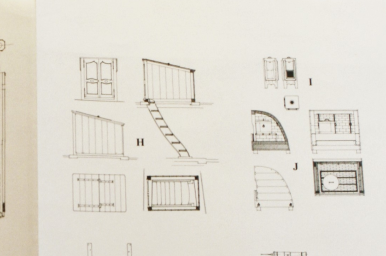
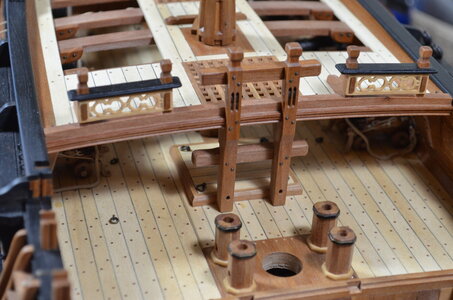
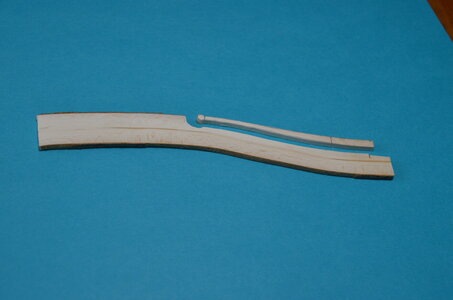
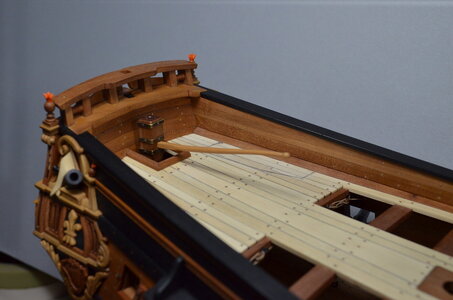
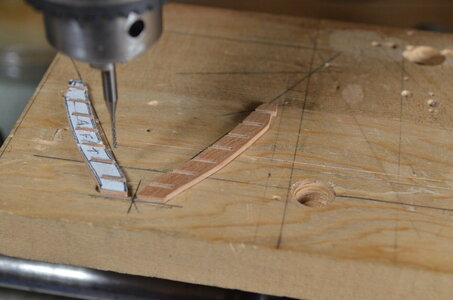
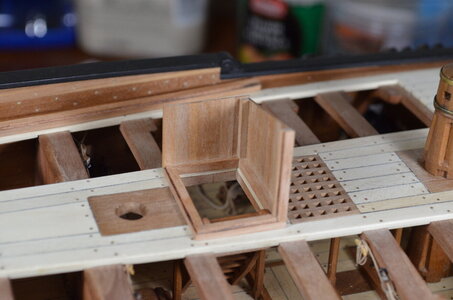
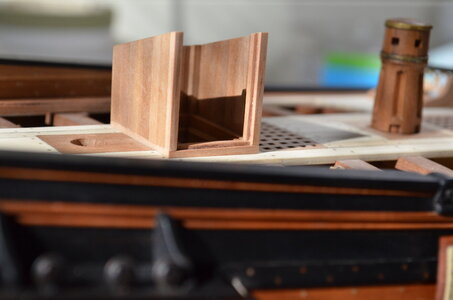
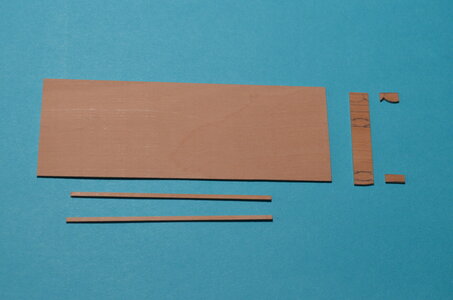
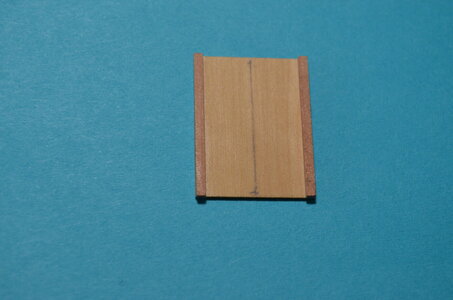
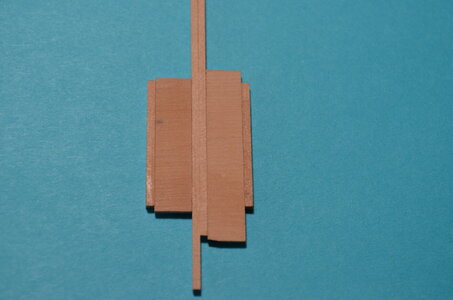
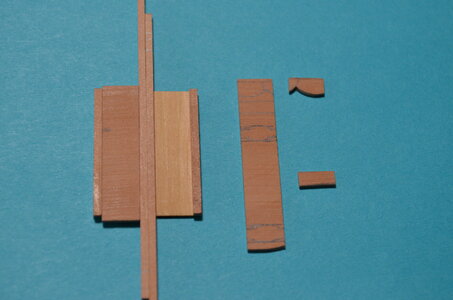
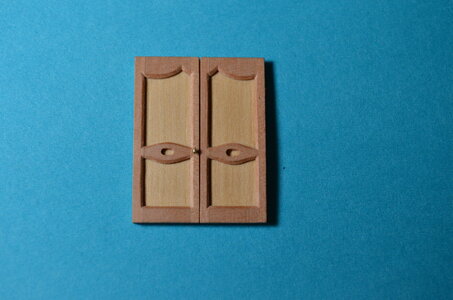
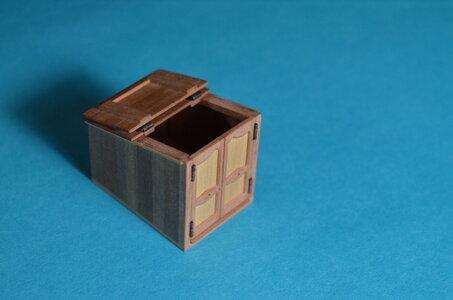
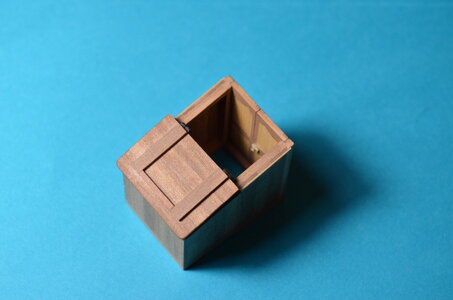
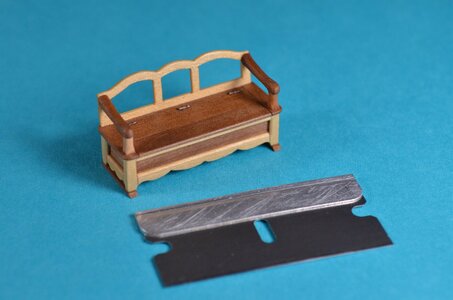
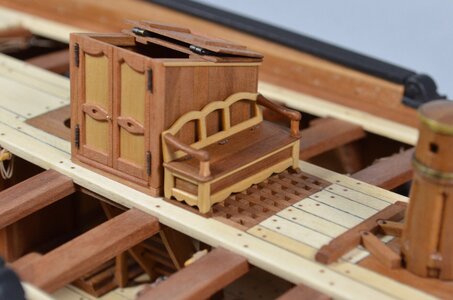

 . Let's see if I can explain it. Some of the hinges, like the ones on the gun ports and the ones on the flip-back companionway top on the quarter deck, are working hinges. I'll be making a few more of those for the doors on the deck sleeping cabins at the helm. I will take copious photos of those when I make them (hopefully soon). But right now I'll do a rough & fast demonstration of the really tiny simulated hinges that I made for the quarter deck companionway doors and the seat-lid of the small-arms bench.
. Let's see if I can explain it. Some of the hinges, like the ones on the gun ports and the ones on the flip-back companionway top on the quarter deck, are working hinges. I'll be making a few more of those for the doors on the deck sleeping cabins at the helm. I will take copious photos of those when I make them (hopefully soon). But right now I'll do a rough & fast demonstration of the really tiny simulated hinges that I made for the quarter deck companionway doors and the seat-lid of the small-arms bench.